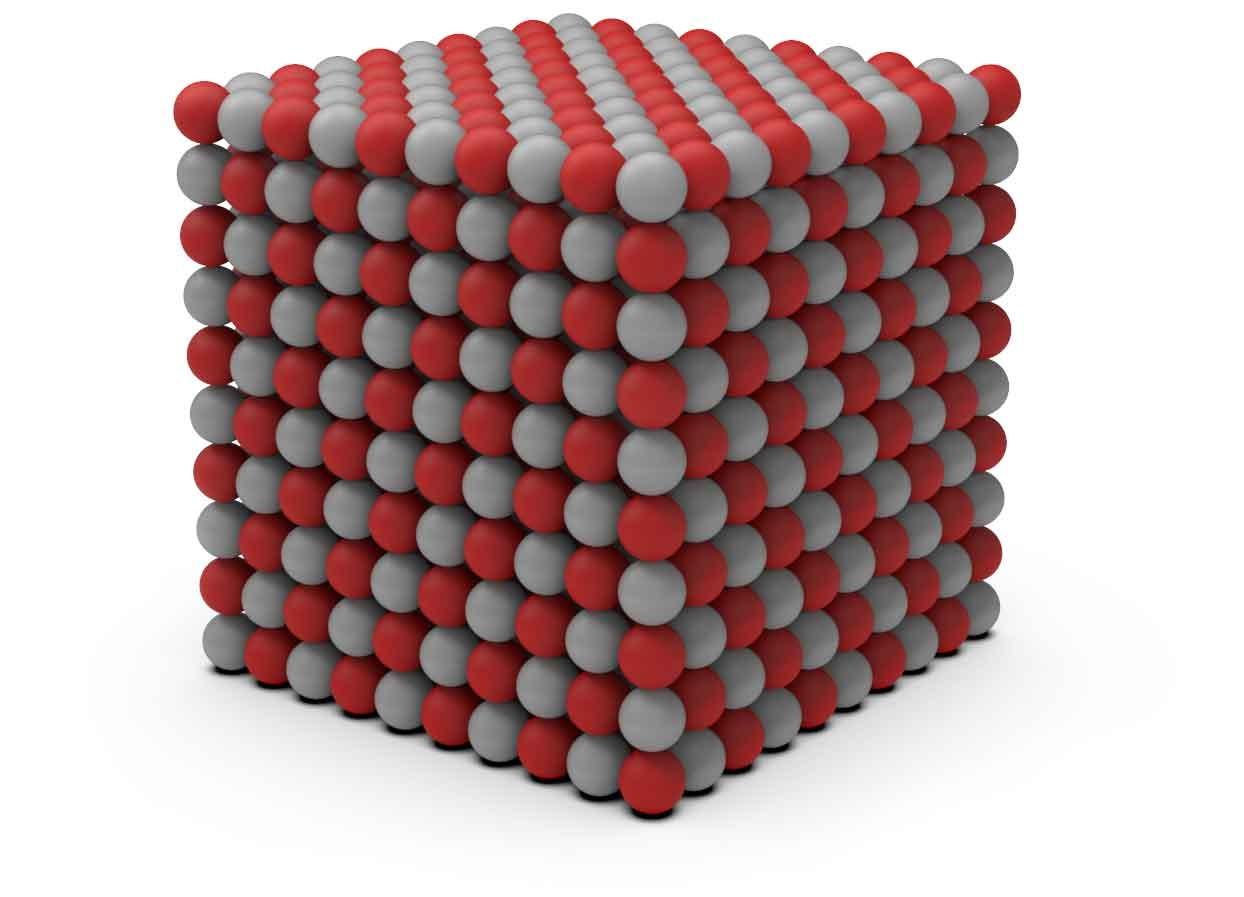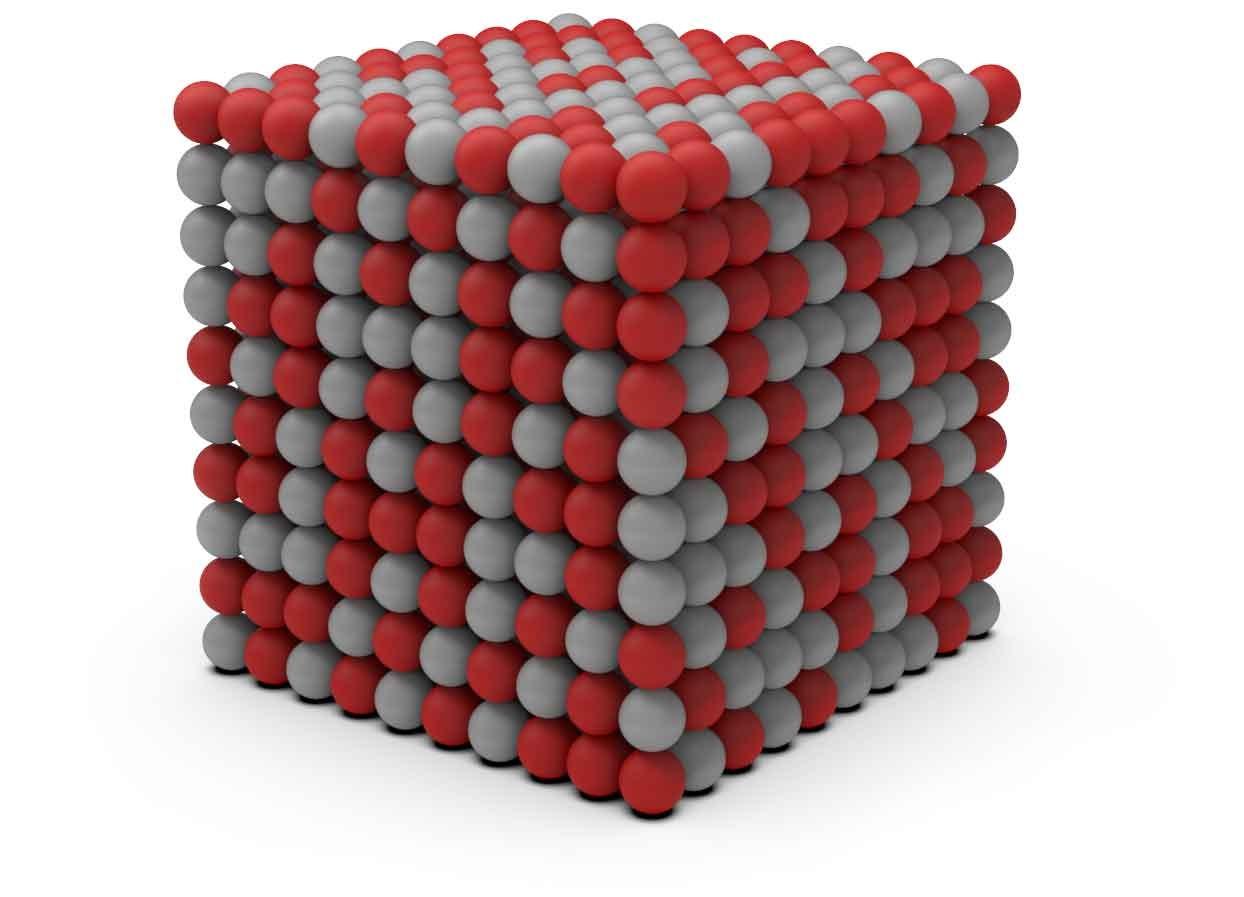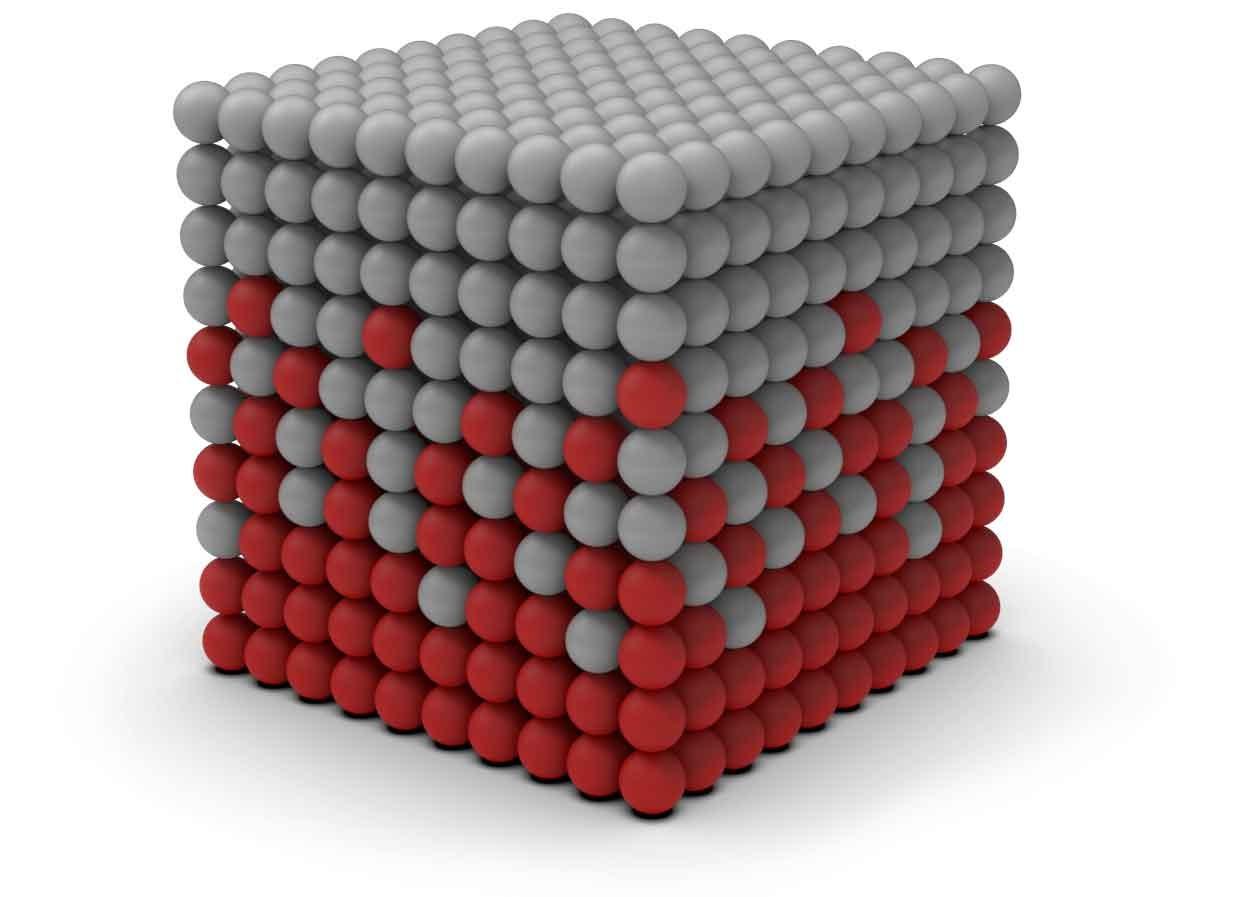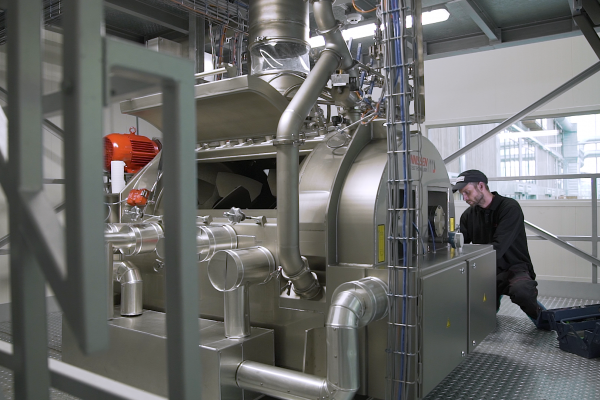Mixing powders results in powder mixtures with various structures.
This article discusses
- The arrangement of structures that can arise in powder mixtures
- The differences in these arrangements
- Sampling a powder mixture
The experts of Dinnissen Process technology are ready to answer all of your questions:
Get in touch with Juul Jenneskens 077 467 3555
Characterization of the powder mixture
Mixing of solids is common. It is a very extensive, worldwide activity, involving an estimated trillion kilograms of powders and granular materials.
To arrive at a meaningful evaluation of the powder mixture, a reliable definition of the powder mixture is required. This seems obvious. However, the following explanation of possible arrangements and structures of powder mixtures shows that some caution is warranted in the implementation of powder mixtures.

Perfect powder mixture
The ordering of powder mixtures
Mixing is an everyday activity for both specialists and outsiders, so that good mixing is often taken for granted. Even processes where the homogeneity of the mixture depends on the mixing process is often incorrectly expected to have a homogeneous composition.
This prejudice certainly also applies to powder mixtures that partly consist of very small particles that are not visible to the naked eye. These particles are expected to have a homogeneous distribution.
The following classification may be helpful to provide a nuanced description of the distribution of particles in a powder mixture:
- Perfect
- Randomly distributed
- Organized
Unfortunately, the actual powder distribution in a mixture will generally deviate from the perfect distribution mentioned above. In practice, a certain degree of heterogeneity will always occur, often caused by incomplete mixing, agglomerates and segregation.

Randomly distributed
How a perfect distribution differs from a random distribution in a mixture
A distribution is considered perfect and uniform if all particles are 100% regular and homogeneous between the other particles and are positioned in the same way as atoms within a perfect crystal. Each sample taken from a powder mixture with a perfect powder distribution will show a 100% identical picture of this distribution. Unfortunately, achieving a perfect powder distribution is only possible when particles are placed in the mixture one by one.
In practice, powder particles can partially move freely, but at the same time they are also limited in freedom of movement due to different physical properties. In this situation, a randomly distributed powder distribution is created upon mixing. In this case, a sample from such a powder mixture will show a varying number of particles of one type next to each other. This is binomially distributed.

Partial demixing (segregation)
In practice, the actual distribution in a mixture will always deviate from a perfect distribution
What are the structures of the different types of agglomerates?
For powder mixtures in which cohesion between the different powder particles predominates, agglomerates are formed upon mixing.
If an agglomerate is formed that consists of one particle of one kind and a fixed number of particles of another kind, and if these agglomerates in the powder mixture have a random position relative to each other, then this is an ideal random ordered powder distribution.
If the agglomerates consists of one particle of one kind and any number of particles of another kind, this is called a random ordered powder distribution. This distribution is less homogeneous compared to the ideal random ordered powder distribution.
How does segregation arise
Powder mixtures with complex structures, as well as mixtures showing long-term texture and segregation, are difficult to describe and characterize. Depending on the mixing method used, regions may form in the mixture with different parts. Also, blind spots in the mixer or a reduced mixing speed at certain places in the mixer can cause areas of higher segregation. In contrast to mixtures in which the particles can move freely, in mixtures where the cohesion between the particles plays a greater role, several types of agglomerates of particles can form.

Name: Juul Jenneskens
Advisor
Please feel free to contact me if you have any questions about this subject. My team of colleagues and I are ready to answer!
Get in touch with Juul Jenneskens 077 467 3555 [email protected]
Do you prefer to request a consultation directly?
Sampling a powder mixture
The measurement of powder properties stands or falls with a representative sample. A sample must be taken at different times. Taking just one sample of the total mass will give a distorted picture. From the total mass, a representative measurement can be made by taking a number of small samples of each part of the total mass. Two aspects need to be taken into account. The sample has to be taken at different times and from a moving stream.
There are two ways to take a sample from a total batch: in the first way, the samples are joined together and mixed into a homogeneous powder. In the second way, a little powder is taken from each sample, the powder properties of each little powder are measured and an average of each sample is calculated.
The latter method has a great advantage compared to the first method. It also provides a lot of knowledge about the distribution of powder properties within the batch. The disadvantage of this method is that more analyzes have to be performed. The choice for the first or the second sampling method is therefore process dependent.





